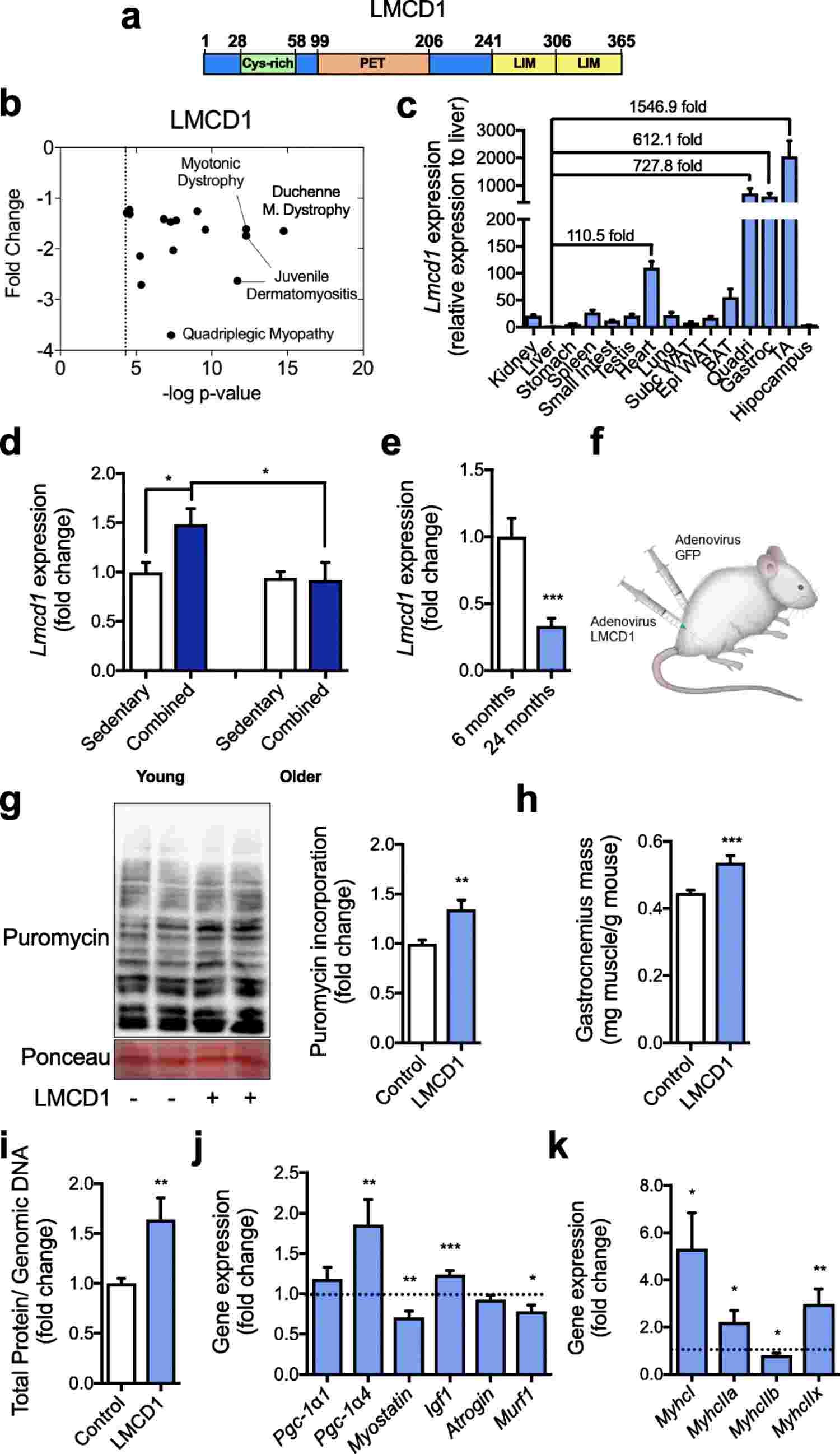Controlling muscle mass size and contraction power

Background: Skeletal muscle mass and strength are crucial determinants of health. Muscle mass loss is associated with weakness, fatigue, and insulin resistance. In fact, it is predicted that controlling muscle atrophy can reduce morbidity and mortality associated with diseases such as cancer cachexia and sarcopenia.
Methods: We analyzed gene expression data from muscle of mice or human patients with diverse muscle pathologies and identified LMCD1 as a gene strongly associated with skeletal muscle function. We transiently expressed or silenced LMCD1 in mouse gastrocnemius muscle or in mouse primary muscle cells and determined muscle/cell size, targeted gene expression, kinase activity with kinase arrays, protein immunoblotting, and protein synthesis levels. To evaluate force, calcium handling, and fatigue, we transduced the flexor digitorum brevis muscle with a LMCD1-expressing adenovirus and measured specific force and sarcoplasmic reticulum Ca2+ release in individual fibers. Finally, to explore the relationship between LMCD1 and calcineurin, we ectopically expressed Lmcd1 in the gastrocnemius muscle and treated those mice with cyclosporine A (calcineurin inhibitor). In addition, we used a luciferase reporter construct containing the myoregulin gene promoter to confirm the role of a LMCD1-calcineurin-myoregulin axis in skeletal muscle mass control and calcium handling.
Results: Here, we identify LIM and cysteine-rich domains 1 (LMCD1) as a positive regulator of muscle mass, that increases muscle protein synthesis and fiber size. LMCD1 expression in vivo was sufficient to increase specific force with lower requirement for calcium handling and to reduce muscle fatigue. Conversely, silencing LMCD1 expression impairs calcium handling and force, and induces muscle fatigue without overt atrophy. The actions of LMCD1 were dependent on calcineurin, as its inhibition using cyclosporine A reverted the observed hypertrophic phenotype. Finally, we determined that LMCD1 represses the expression of myoregulin, a known negative regulator of muscle performance. Interestingly, we observed that skeletal muscle LMCD1 expression is reduced in patients with skeletal muscle disease.
Conclusions: Our gain- and loss-of-function studies show that LMCD1 controls protein synthesis, muscle fiber size, specific force, Ca2+ handling, and fatigue resistance. This work uncovers a novel role for LMCD1 in the regulation of skeletal muscle mass and function with potential therapeutic implications.
LIM and Cysteine-rich Domains 1 (LMCD1) regulates skeletal muscle hypertrophy, calcium handling, and force
Ferreira DMS, Cheng AJ, Agudelo LZ, Cervenka I, Chaillou T, Correia JC, Porsmyr-Palmertz M, Izadi M, Hansson A, Martínez-Redondo V, Valente-Silva P, Pettersson-Klein AT, Estall JL, Robinson MM, Nair KS, Lanner JT, Ruas JL
Skelet. Muscle. 2019 Oct 31;9(1):26








